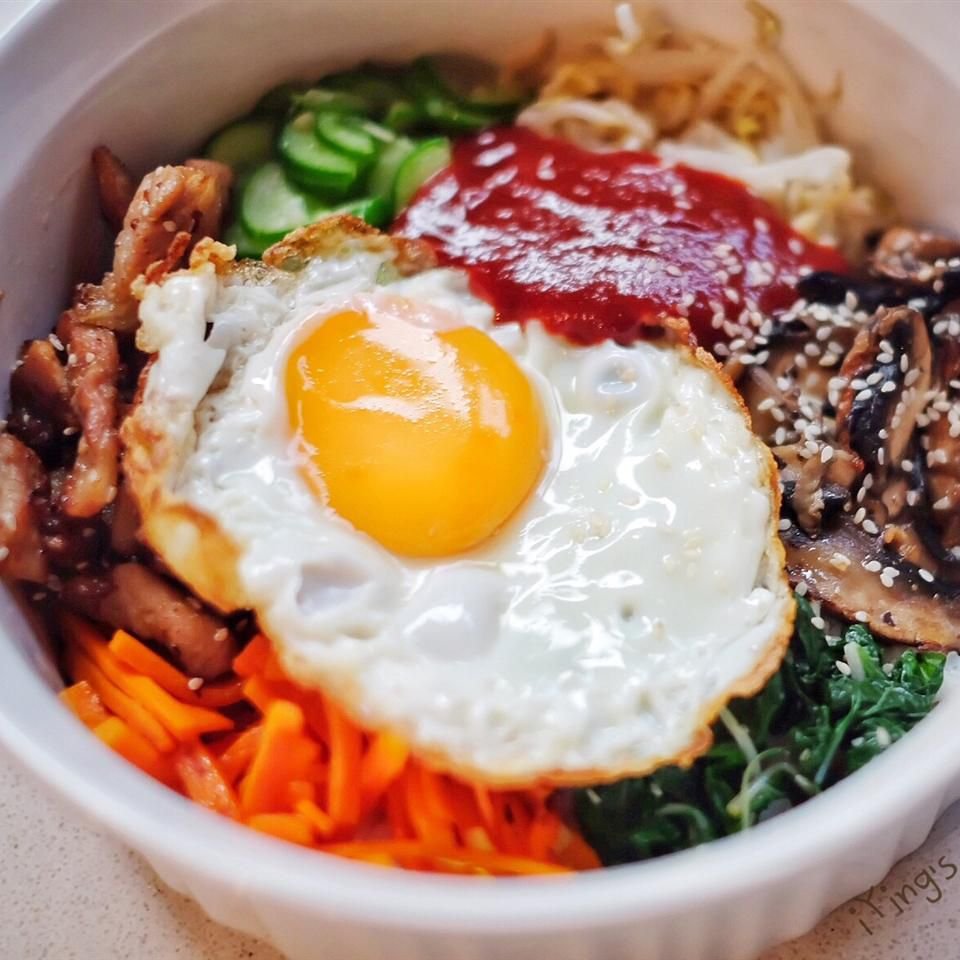Get ready to elevate your dinner game with a vibrant Korean classic—Bibimbap! This colorful mixed rice bowl combines perfectly cooked rice, an array of fresh and sautéed vegetables, your choice of protein, and a delicious runny egg, all drizzled with the rich, savory flavor of gochujang sauce. It’s not just a meal; it’s a culinary canvas where you can express your personal taste and dietary preferences.
Budget Information
The total cost of this bibimbap recipe is approximately $15.00, which breaks down to about $3.75 per serving (serves 4). Here’s how that stacks up:
- Short-grain rice: $2.00
- Vegetables (carrots, spinach, mushrooms, bean sprouts): $6.00
- Protein (beef/chicken or tofu): $5.00
- Eggs: $1.50
- Gochujang sauce ingredients: $1.50
Why This Recipe Works
Imagine a bowl filled with a rainbow of textures and flavors, all waiting to mingle and party on your palate. Bibimbap isn’t just delicious; it’s a versatile masterpiece! Whether you’re looking to savor the simplicity of seasonal veggies or have an adventurous streak and want to toss in some kimchi or exotic proteins, this dish adapts to your preferences. Plus, it’s a fantastic way to clear out your fridge while still impressing your guests with something as visually stunning as it is tasty. Seriously, who can resist a bowl that’s practically a work of art?
Ingredients + Optional Substitutions
Here’s what you’ll need to make your bibimbap:
- 2 cups short-grain white rice ($2.00) — or substitute with brown rice for a healthier twist.
- 1 cup carrots, julienned ($1.00)
- 1 cup fresh spinach ($1.50)
- 1 cup shiitake mushrooms, sliced ($2.00)
- 1 cup bean sprouts ($1.00)
- 8 oz protein of your choice (beef, chicken, tofu) ($5.00)
- 4 large eggs ($1.50)
- 2 tablespoons gochujang sauce ($1.00) — or homemade gochujang sauce recipe which combines 3 tbsp gochujang, 1 tsp sesame oil, and 1 tsp sugar.
- Sesame seeds for garnish ($0.50)
Step-by-step Recipe Instructions
Step 1: Start by rinsing the short-grain rice under cold water until the water runs clear; this will help achieve that perfect sticky texture. Once rinsed, combine the rice and 2.5 cups of water in a rice cooker. Turn it on and let it do its magic while you prepare your other ingredients. The moment that fluffy rice steams to life will have you anticipating your glorious bibimbap bowl!
Step 2: While the rice cooks, it’s time to sauté your vegetables. Heat a drizzle of sesame oil in a skillet over medium heat. Start with the carrots, cooking them for about 3-4 minutes until they soften slightly and brighten in color. Next, add the shiitake mushrooms and give them a stir for another couple of minutes. Finally, toss in the spinach and bean sprouts, cooking just until the spinach wilts. Season with a pinch of salt, and then remove these veggie marvels from the heat.
Step 3: Now, let’s tackle the protein! Depending on your choice, if you’re going for beef or chicken, heat a separate pan over medium-high heat. Slice your protein thinly and cook it until it’s perfectly seared. If you opt for tofu, simply cube it and fry until golden brown on all sides. Set aside your cooked protein in a warm spot.
Step 4: It’s egg time! In the same skillet, reduce the heat to low and crack the eggs in, cooking them sunny-side up until the whites are tender but the yolks remain runny—a glorious golden crown atop your bibimbap.
Step 5: Finally, it’s assembly time! Grab your favorite bowls—big enough to fit all that goodness. Start with a generous scoop of fluffy rice in the center, beautifully surround it with piles of sautéed vegetables, your protein choices, and then nestle that glorious egg right on top. Drizzle with gochujang sauce, sprinkle with sesame seeds, and voila!.
Nutritional Facts
Per serving:
- Calories: 550
- Protein: 25g
- Carbohydrates: 70g
- Total Fat: 18g
- Saturated Fat: 4g
- Fiber: 4g
- Sugar: 3g
- Sodium: 600mg
Storage and Reheating Tips
You can store any leftover bibimbap components in airtight containers in the fridge for up to 3 days. To reheat, just pop the rice and proteins in the microwave for 1-2 minutes, and sauté your veggies again briefly on the stovetop to freshen them up. Just remember, the egg is best when freshly cooked, so try to fry that up fresh each time!
Serving Suggestions
This bibimbap is fantastic on its own, but if you want to kick it up a notch, consider serving it alongside a small side of kimchi for that classic Korean experience. You could even offer a selection of extra toppings, like avocado slices, more fermented veggies, or even a drizzle of spicy mayo. Each person can customize their bowl to their heart’s content!
Reader Tips or Helpful Notes
Don’t stress about the prep time! You can chop your vegetables and cook your protein ahead of time. Additionally, if you’re not a big fan of spice, feel free to adjust the amount of gochujang in your sauce! And remember, bibimbap isn’t only a meal; it’s an experience. So, take your time to arrange everything beautifully. Your taste buds (and Instagram followers) will thank you!
Recipe FAQs
What type of rice should I use for bibimbap?
Use short-grain rice for that perfect sticky texture, but you can substitute with brown rice for a healthier alternative.
Can I make bibimbap vegan?
Absolutely! Just skip the egg and use tofu or your favorite plant-based protein instead. Don’t forget to load up on those veggies!
How do I store leftover bibimbap?
Keep components in airtight containers in the fridge, and reheat as needed. It’s best to prepare eggs fresh each time.
Is bibimbap spicy?
The heat level depends on how much gochujang you use. Adjust it to match your personal spice tolerance!
Can I use different vegetables?
Yes! Feel free to mix and match with your favorite veggies. The goal is to create a colorful and tasty medley!


